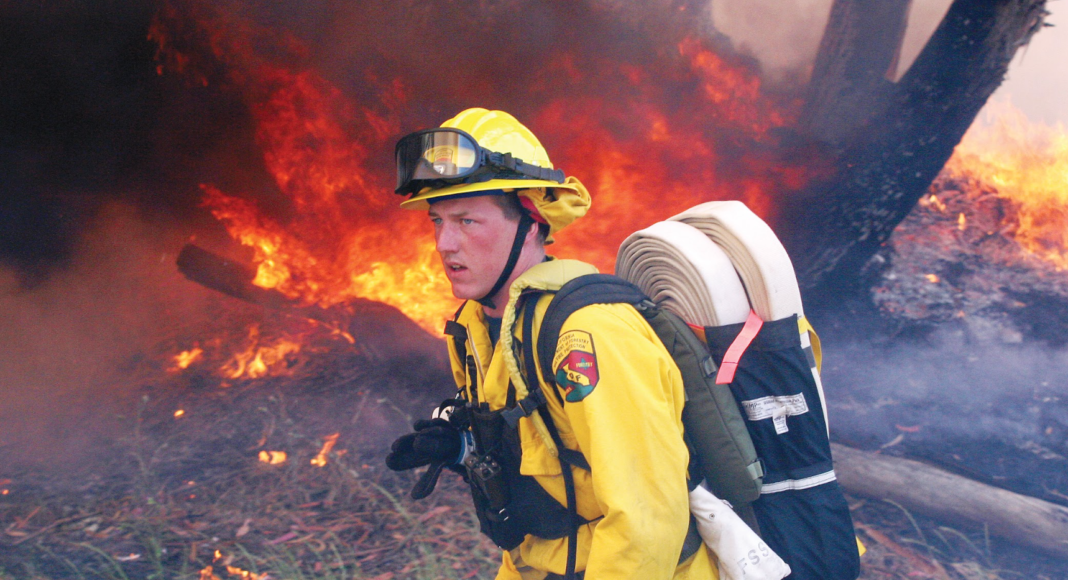Wildfires in the county’s unincorporated regions have stayed relatively low for this time of year.
So far in 2023, just 71 vegetation fires have ignited in Santa Cruz and San Mateo counties, compared to 107 for the same time period last year.
That’s according to Nate Armstrong, who serves as unit chief for Santa Cruz County’s Cal Fire division.
But Armstrong warned the County Supervisors during their Aug. 8 meeting that the fire season could peak later than usual. That’s in part because of the grasses and brush drying out in the warm, dry summer, leading to a fire season starting possibly in September or October.
“Cal Fire’s main operational objective is to keep 95% of fires to 10% or less, and by and large we do a great job of that,” Armstrong said.
Armstrong said the lower number of fires can be attributed to the exceptionally wet winter.
But those rains also fueled the growth of forest understory and grasses, and left behind debris that could serve as fuel and increase the fire danger this year—and in the coming years.
Low Recruitment
The county is trying to build up its ranks of roughly 70 volunteers, with five volunteer companies in South Skyline, Bonny Doon, Loma Prieta, Davenport and Corralitos.
But recruiting and retaining volunteers can be a challenge, Armstrong said.
One way many jurisdictions do this is by using crews of state prison inmates trained to fight fires. But even those suffer from low numbers.
Just 72 of the 152 inmate crews are sufficiently staffed statewide. Of those, only 61 have enough training to safely respond to fires, Armstrong said.
Cal Fire spokesman Issac Sanchez said that the agency is addressing these low numbers by entering into agreements with organizations such as California Conservation Corps, California Military Department and by requesting resources from local and federal officials.
Cal Fire has also hired seasonal firefighters to make up for the lagging numbers.
But those measures have not completely made up for the reductions in volunteers, Sanchez said.
“CDCR hand crews, like all hand crews, are part of every vegetation fire response and are sent as part of the initial dispatch,” he said. “We see these resources as valuable in our efforts to not only combat vegetation fires but also in preparing communities for fires through fuel reduction projects.”
Inside The Problem
The reasons behind low volunteer numbers vary.
Low volunteers are especially prevalent with crews made up of state prison inmates who are trained to help battle fires. Mainly, Armstrong said, because of recent changes to state sentencing laws that have significantly reduced the incarcerated population.
The Covid-19 pandemic also significantly reduced the number of people who would be eligible for the Conservation Camp Program, said CDCR spokeswoman Tessa Outhyse. That’s where inmates learn the skills they need to fight fires.
About 1,800 people make up the current Conservation Camp Program, Outhyse said, which is an increase from last year.
About 970 of these are qualified to work on fire lines and can respond to emergencies all over the state at a moment’s notice.
Last week, more than 100 incarcerated firefighters assisted crews with emergencies in at least four counties across California, Outhyse she said.
CDCR is working on a pilot program to expand opportunities for youthful offenders and their peer mentors to participate in the camps. Officials frequently recruit eligible inmates from the state’s institutions.
They also tell them about the opportunities afforded to incarcerated firefighters after their release, such as the Ventura Training Center, which provides further training to inmates who have participated on fire crews.
Ultimately, Armstrong stressed, while equipment can help abate fire it’s the crews on the ground that make the difference when battling a blaze.
“I’ve never seen a fire completely put out with aircraft,” he said. “It all comes down to the folks on the ground.”













